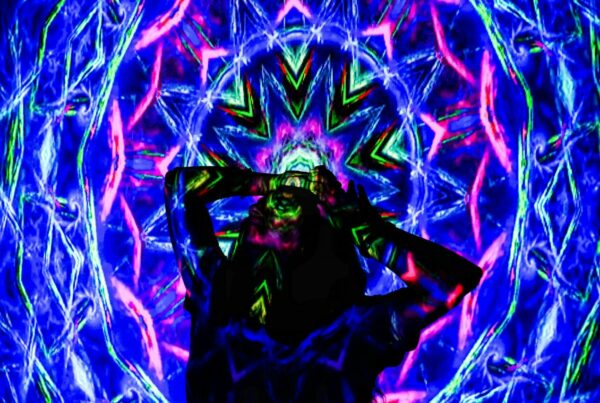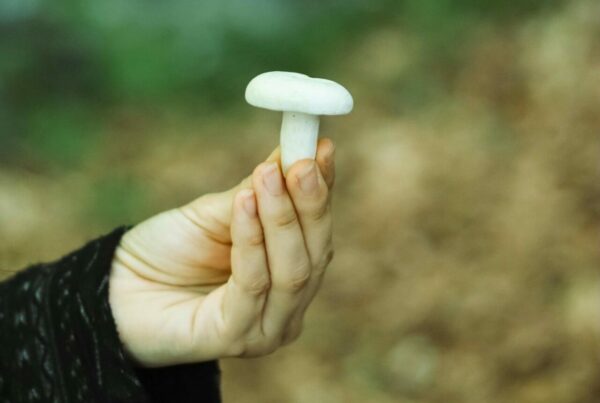Alzheimer’s Disease (AD) is a devastating neurodegenerative condition with no known cure. The increasing prevalence of this illness presents a substantial challenge. Researchers are investigating better treatment approaches, considering both naturally occurring and manufactured alternatives.
Many studies have highlighted the potential of serotonergic psychedelics like LSD, DMT, and psilocybin, in the treatment of Alzheimer’s disease. For more fascinating details, feel free to explore online resources or contemplate “purchasing psychedelics online in Canada.”
[toc]
Psychedelics in Alzheimer’s Treatment: Their Role
Conventional psychedelics have shown promise in treating initial stages of Alzheimer’s Disease (AD) or mild cognitive impairment (MCI) by fostering the development of new brain cells.
Psychedelics may stimulate neural flexibility, enhancing learning and memory by targeting particular brain receptors. This could potentially decelerate or even reverse the neurodegenerative effects of AD. Furthermore, psychedelics could mitigate depression and anxiety, which are frequently experienced by AD patients, by provoking positive psychological responses.
Debates continue about the workings of psychedelic therapies. Some argue that profound experiences from high-dose psychedelics, such as mystical sensations or a sense of self-dissolution, are essential for reaping psychological benefits. Others suggest that the key lies in the biological changes triggered by these substances. Both viewpoints may be valid.
Conventional psychedelics appear to aid the brain in adapting and reducing inflammation, even at lower doses. Hence, low-dose treatments could benefit conditions like brain degeneration or migraines without substantial mind-altering effects. However, for depression, anxiety, or addiction, the mind-altering effects seem vital, prompting introspection and behavioural changes. Therefore, both low and high doses deserve investigation for personalized therapy.
Understanding the Impacts of Serotonergic Psychedelics
Serotonergic psychedelics, which include substances like LSD (lysergic acid diethylamide), DMT (dimethyltryptamine), and psilocybin (found in magic mushrooms), are becoming increasingly appealing.
Psychedelics are garnering attention for their potential therapeutic benefits on a range of mental health disorders.
conditions.Many experts propose that serotonin receptors, recognized for their capacity to bolster cognition and control neuroplasticity, offer a promising focus area in Alzheimer’s Disease (AD) research.
These substances chiefly exert their pharmacological impacts by modifying the brain’s serotonin system, leading to alterations in perception, mood, and consciousness. The following points summarize findings from various studies supporting this idea:
- In particular, the 5-HT2A subtype of the receptors affects the gene expression of neuroplasticity-promoting neurotrophins in brain areas impacted by AD.
- These receptors control cortical signalling, which is vital for cognition, memory, and synaptic plasticity.
- Despite their unique distribution within neurons, serotonin receptors aid in neural development, regeneration, and plasticity.
Significant Research Findings
- Serotonergic psychedelics have shown potential in alleviating aspects of AD pathology by promoting neuroplasticity.
- Traditional psychedelics influence neurotransmission, promote synaptic remodeling, and augment factors that underpin neuronal survival.
- Specific psychedelics, such as muscimol and Sig-1R agonists, may reduce the neurotoxicity associated with AD progression.
- Traditional psychedelics activate pathways in brain areas affected by AD, proposing potential for slowing down or reversing brain degeneration.
- Psilocybin mushrooms spur neural plasticity to stimulate neurogenesis and induce lasting alterations in brain circuits.
- Psychedelics improve brain connectivity by targeting receptor genes and triggering changes in neurons and networks.
Research in a clinical setting has shown that both traditional and non-traditional psychedelics derived from magic mushrooms affect various biological processes in the brain. These include immediate changes in gene expression and substantial modifications in brain structure and function.
Interacting with receptors such as serotonin, sigma, NMDA, and GABA, these psychedelics result in enhanced synaptic plasticity and brain rejuvenation. Therefore, they could have positive effects on behaviour, memory, and cognition, making them promising therapeutic options for treating AD and similar disorders.
Procure Psychedelics Online in Canada
Welcome to our online psychedelic store serving British Columbia, Canada. If you’re considering microdosing magic mushrooms, we suggest initiating your exploration with a reputable medicinal mushroom dispensary.
- LSD
LSD, a man-made drug, is derived from a fungus called ergot that grows on rye grains. Even minute doses of this psychoactive compound can shift perceptions, emotions, and thoughts.
Excessive consumption of LSD can lead to powerful hallucinations, warping your perception of time and space. Be cautious, as substances marketed as LSD could potentially be other drugs such as NBOMe or members of the 2C drug family.
| Product | Kittease – Ketamine Microdose Troche (30x50mg) | Zenly – LSD Gel Tabs – 600ug (100ug Per Tab) | Zenly – LSD Gummies – Sour Zen Berry – 200ug (100ug Per Gummy) |
| Intended Use | Stress, depression, pain management, PTSD, OCD, work-related stress, performance anxiety, insomnia, and addiction. | Outstanding experiences | Outstanding experiences |
| Dosage | 50mg per troche / 30 per pack – 1.5 grams of ketamine/per pack | 600ug total/6 Tabs (100ug/Tab) | 200ug total/2 Gummies (100ug/Gummy) |
| Usage Guidelines | Consume one full troche | Take one full tab to feel the complete effect. Wait at least 2 hours before consuming another. | Eat one full gummy to obtain the full effect. Wait at least 2 hours before eating another. |
| Benefits | Quick acting with minimal risk, enhanced receptivity, ideal for self-reflection and cognitive improvement. | Accurately measured dose for the perfect trip, lab-verified | Accurately measured dose for the perfect trip, lab-verified |
- Magic Mushrooms
Over 180 mushroom species are known to possess psilocybin and psilocin, substances noted for their therapeutic advantages and positive impact. on mental health.
The impact may vary depending on the type of mushroom, the specific cultivation batch, the ingested quantity, and the individual’s tolerance level. While some prefer microdosing for minor effects, others opt for larger doses for a more intense experience. The quality can also differ based on the used cultivation techniques.
Blue Meanies, officially identified as Panaeolus cyanescens, are small dried fungi that flourish in warm tropical climates, often on the dung of cows and water buffaloes. They develop blue spots on their surface as they grow, which is what inspired their name.
- These fungi are abundant in psilocybin and psilocin, both of which are highly concentrated.
- They have been traditionally used for recreational purposes, especially among the Balinese people, who consume them during celebrations and for artistic inspiration.
- Due to their hallucinogenic effects, they are popular among tourists and travelers in locations like Bali. These effects can include feelings of euphoria, hallucinations, happiness, and bouts of intense laughter.
- DMT
DMT, a potent hallucinogenic compound, is found in certain plants such as Psychotria viridis and Chacruna. Often called the “spirit molecule,” these controlled substances can trigger deep psychedelic experiences. They offer a short but intensely immersive journey characterized by vivid visual and auditory hallucinations.
| Product | Dream Machine – Vape Cartridge – DMT 1ml | Integral Alchemist – ACACIA Changa Pre-Roll | Integral Alchemist – Mimosa- 1ml DMT Vape Cart |
| Description | Explore hyperdimensional spaces with DMT. | Experience ayahuasca-like effects with a blend of herbs and DMT. | Begin a journey filled with mystical visions and spiritual revelations with DMT. |
| DMT Content | 1g | About 90mg | 1ml |
| Instructions | Preheat the cartridge and inhale | Enjoy the pre-rolled smoke at a pace that suits you. | For immediate effects, inhale the vapor. |
| Effects | Potent hallucinations, altered consciousness. | Extended, visually psychedelic experience. | Spiritual awakening, euphoria, significant changes in perspective. |
| Duration | Varies from person to person | Lasts up to 1 hour | Can last for up to 30 minutes |
Understanding the Long-term Impact of Psychedelic Use
Current research is focused on understanding the long-term effects of psychoactive substances. Despite the evolving understanding in this field, the term “long-term effects” generally refers to consistent changes in cognition, emotions, or memory following extended use of psychedelics.
The study of the long-term effects of psychedelics is complex. Some research suggests potential benefits for mental health, while others point towards possible risks, such as the onset of psychosis.
Amidst this complexity, researchers are persistently working to understand the effects of prolonged psychedelic use on mental health. They are undertaking rigorous research and monitoring individuals over extended periods to collect more accurate data.
Purchasing Cannabis from a Trusted Supplier
Research suggests a significant change in Alzheimer’s disease treatment, indicating that psychedelics could redefine how we treat brain disorders. Experts are optimistic that the therapeutic use of these substances could entirely revolutionize Alzheimer’s treatment, bringing newfound hope to numerous patients and their families.
For high-quality products, opt for a certified supplier like Buy Shrooms Canada. With a wide range of cannabis products available, including flowers, edibles, concentrates, and more, Buy Shrooms Canada guarantees genuine, lab-tested items that meet strict food and drug regulations.
Order your shrooms online today.
Frequently Asked Questions
How do psychedelics differ from other substances typically used in Alzheimer’s treatments?
Psychedelics distinguish themselves from traditional Alzheimer’s medications through their therapeutic approach and effects. They foster new neural connections by acting on the brain’s serotonin system, facilitating profound psychological experiences that enhance emotional well-being.
Unlike conventional medications that primarily manage symptoms, psychedelics are being evaluated by Health Canada for their lasting benefits and comprehensive treatment approach, which includes therapy.
Research into the use
Psilocybin’s potential effectiveness in treating conditions like obsessive-compulsive disorder, coupled with its safety record in preventing multi-system organ failure, distinguishes it from conventional controlled substances.
Can psychedelic-assisted therapy be a viable treatment for Alzheimer’s patients facing end-of-life distress?
Psychedelic-assisted therapy could prove to be beneficial for critically ill Alzheimer’s patients dealing with the fear of imminent death.
- Emotional relief provision. This type of therapy has been shown to lessen feelings of anxiety and sadness in some individuals, especially those severely ill. This could also be advantageous for Alzheimer’s patients.
- Generally safe when supervised. If psychedelics are administered in a controlled environment under the supervision of a professional therapist, they are usually harmless and well accepted by most individuals.
- Potential improvement in quality of life. For Alzheimer’s patients, a boost in emotional well-being can make a significant difference, even without any improvement in memory issues.
- Additional research is required. Although this therapy seems promising, more studies are needed to verify its safety and effectiveness for Alzheimer’s patients, particularly those approaching the end of life.
How long does a psychedelic therapy session for Alzheimer’s patients last?
- Preparation Phase. This stage involves one or two sessions, each lasting 1 to 2 hours. These meetings are aimed at preparing the patient for the experience to come, establishing expectations, and building trust with the therapist.
- Main Psychedelic Session. This crucial session, during which the psychedelic substance is consumed, typically lasts between 4 to 6 hours. The patient spends this time in a controlled environment, often lying down with eye shades on and listening to music, while therapists closely monitor them.
- Integration Phase. After the session, follow-up meetings are held to help the patient process and integrate their experiences. These meetings usually last for 1 to 2 hours each, with the number of sessions varying.
Also, you might want to check out:





